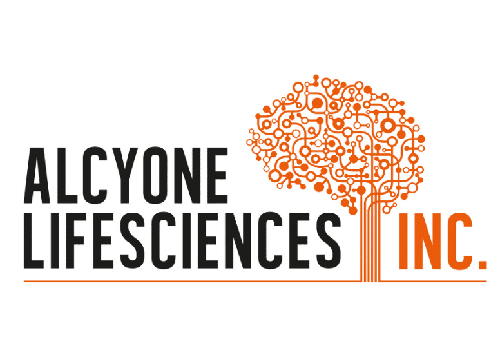Looking to the Future of Neuro Devices: Exclusive Interview with Alcyone Lifesciences CEO PJ Anand
Alcyone Lifesciences is a medical technology company based out of Lowell, MA, which specializes in central nervous system (CNS) drug delivery platforms for targeted infusions of the brain or spinal cord. Their Thecaflex DRx System was recently awarded Breakthrough Device designation by the FDA, for spinal infusion of therapeutic medications.
Medgadget had the opportunity to speak with Alcyone Lifesciences CEO, PJ Anand, about his inspiration for cutting edge medical technology and the future direction of neurological devices.
Kurt Yaeger, Medgadget: Great to talk to you, PJ. Please first give us a sense of your background.
 PJ Anand, Alcyone Lifesciences: My academic background is in biochemistry; however, I branched into the business of medicine, particularly medical devices, working for a CRO focused on preclinical to regulatory development of devices and therapeutics by both large and small MedTech and biopharma companies. While there I realized my true interest was in building products versus pure service industry. I moved companies and took a role working for a firm focused on coating services for orthopedic implants; my job was to vertically integrate the business into a finished medical device for treatment for ESRD (kidney disorder). That business I helped build was acquired by a large MedTech for multiples ROI. I then joined a group out of MIT and Harvard as a founding executive of a venture-funded company focused on advanced materials bio-composite platform for several applications including cardiovascular disease such as peripheral vascular diseases and separately trauma management. After helping that company advance its products towards clinical studies, I left with a vision to start Alcyone, Anuncia, Inc. (an Alcyone spin-out company focused on hydrocephalus management), and Arthromeda, which is developing patient-specific navigation system for arthroplasty surgery.
PJ Anand, Alcyone Lifesciences: My academic background is in biochemistry; however, I branched into the business of medicine, particularly medical devices, working for a CRO focused on preclinical to regulatory development of devices and therapeutics by both large and small MedTech and biopharma companies. While there I realized my true interest was in building products versus pure service industry. I moved companies and took a role working for a firm focused on coating services for orthopedic implants; my job was to vertically integrate the business into a finished medical device for treatment for ESRD (kidney disorder). That business I helped build was acquired by a large MedTech for multiples ROI. I then joined a group out of MIT and Harvard as a founding executive of a venture-funded company focused on advanced materials bio-composite platform for several applications including cardiovascular disease such as peripheral vascular diseases and separately trauma management. After helping that company advance its products towards clinical studies, I left with a vision to start Alcyone, Anuncia, Inc. (an Alcyone spin-out company focused on hydrocephalus management), and Arthromeda, which is developing patient-specific navigation system for arthroplasty surgery.
Medgadget: What inspired you to form Alcyone?
PJ: I have always felt that a linear pathway to the development of medical technology or therapeutics is ineffective. What I mean by this is that most diseases are multifactorial and hence a single linear solution, whether a device intervention or a drug therapy, doesn’t really work well. The inspiration for Alcyone came from a strong conviction that “convergence” between treatment enabling device systems combined with disease modifying drug therapies pioneered by biopharma, ranging from genetic medicines to immuno-oncolytics, is the key to more powerful patient care, improved quality of life, and better clinical outcomes. Based on data from early stages of gene therapy, antisense oligonucleotide therapy, monoclonal and oncolytics, I realized that there is a profound unmet need for well-designed sophisticated therapy enabling technologies for treating some of the most difficult to treat diseases in neurology and oncology. These sophisticated tools for intrathecal medicines or intratumoral medicines are exactly what we are able to offer clinicians treating disease-modifying therapies to patients with debilitating conditions.
Medgadget: Why did you take on this difficult problem for patients with neurological disorders?
PJ: We feel the value and the purpose of Alcyone is to address some of the most challenging problems in medicine. We feel addressing the significant unmet medical need associated with chronic neurological conditions represents one of the most pressing challenges facing medical science today that we simply cannot ignore just because it is hard to solve. In addition, we feel strongly committed to helping patients dealing with debilitating neurological conditions, many of them children and/or orphan populations.
Medgadget: Why is Alcyone uniquely poised to tackle this problem?
PJ: The answer is sincerely is that we have a uniquely talented team and intellectual property position that provides an unfair competitive advantage to us and our biopharma partners. The Alcyone Team includes immensely talented engineers, neuroscientists, preclinical development, regulatory and clinical development experts who take a data centric approach to development of our innovations in treatment of neurological conditions and cancers. A multi-factorial, agile approach combining biomedical engineering, physics, biology, physiology, drug chemistry and patient-specific conditions, has allowed us to develop first-in-class / best-in-class technology.
Medgadget: How has developing neurological devices changed since you entered this space?
PJ: There have been tremendous developments in both traditional and endovascular neurosurgery. Neurological Imaging and machine-aided surgical techniques now allow our clinicians to address precisely where intervention is needed in the central nervous system. With these developments, we now have much better devices to treat complicated conditions including epilepsy, movement disorders, pain and spasticity.
Medgadget: What are your biggest accomplishments in this space?
 PJ: Three specific areas we are making a meaningful impact are in the areas of intrathecal therapy delivery, precise and effective targeting for immune-oncology, and hydrocephalus management.
PJ: Three specific areas we are making a meaningful impact are in the areas of intrathecal therapy delivery, precise and effective targeting for immune-oncology, and hydrocephalus management.
- In intrathecal medicines our more recent success has been with our Breakthrough Device Designated ThecaFlex DRxTM System for intrathecal therapies. This platform technology is designed for a broad set of patients including those with complex spine conditions and children who may be greatly affected by repeat anesthesia required to receive chronic therapy. We hope to have a positive impact in the treatment of spinal muscular atrophy (SMA) and neurodegenerative disease such as Huntington’s disease, Parkinson’s disease and potentially Alzheimer’s disease.
- In immuno-oncology, we are currently in groundbreaking clinical trials with our Alcyone Micro-tip Multi-port Cannula (AMCTM System) for intratumoral therapies. We have made significant contributions in intratumoral drug therapy to treat glioblastoma multiforme (GBM) and DIPG, a brainstem glioma, with our AMC platform. This technology is incorporated into Phase 3 studies for both GBM and DIPG, driving benefit through targeted precision delivery that drastically improves biodistribution of an immuno-oncolytic virus. Additionally, we are exploring the benefit of this technology for application to solid tumors in other parts of the body.
- In hydrocephalus management, we have the opportunity to prolong shunt life and provide peace of mind to patients, their families, and clinicians treating these patients with our ReFlowTM System designed for non-invasive intervention for ventricular shunt occlusion. The Anuncia ReFlow Ventricular Shunt System is designed to reduce repeat invasive brain surgeries due to shunt occlusion.
Medgadget: Where do you see the biggest opportunities in the neurological device space over the next ten years?
PJ: I go back to my conviction in convergence in medicine. Going forward, I see opportunities in convergence of neuro devices coupled with bio-monitoring, artificial intelligence, and deep machine learning. There is much to learn about the biology and interaction of biology with a device interface towards sustained therapeutic solutions with improved outcomes.
Medgadget: Where do you see the biggest challenges in the neurological device space over the next ten years?
PJ: I see two major challenges. One is that there is going to be a need for much more thoughtful and deliberate clinical trials that include clear outcome measures including biological and imaging parameters. Two, the immense consolidation in the industry that may not naturally allow for disruptive innovation which requires sustained funding and commercial access. We need to address both of these challenges forward facing.
Medgadget: What obstacles do you see in the current political climate to pursuing your goals at Alcyone?
PJ: We need to innovate thinking globally more than ever. If you think about Central Nervous System malignancies, Spinal Muscular Atrophy, Huntington’s Disease, Amyotrophic lateral sclerosis (ALS) also known as Lou Gehrig’s Disease, Parkinson’s Disease or Alzheimer’s Disease there are significant patients outside of United States that we need to serve in addition to within United States. Having a tense and uncertain political climate and unpredictable foreign regulations and policies makes it a challenge to bring certainty to global launch plans.
Medgadget: How do you see the device portfolio at Alcyone evolving over the next few years?
PJ: We believe that the cerebral spinal fluid (CSF), the CSF space and CSF dynamics are an untapped area to bring significant treatment options for patients with complicated neurological conditions. We will build our portfolio on some exciting fundamental intrathecal medicines sciences we’ve pioneered. We have also been studying tumors from a multidimensional compartmentalized scientific perspective including characterizing the heterogeneity. We will utilize this scientific background work toward a data-centric approach to optimizing our intratumoral therapeutic platform.
Medgadget: Thanks so much for your time, PJ. Is there anything you think we should know about your company?
PJ: The core value that allows Alcyone to develop innovative technologies in neuroscience and oncology is our deep purpose to serve patients in need and clinicians who strive everyday help these patients. This singular purpose shared through-out the organization dictates our vision, mission, and strategy.




